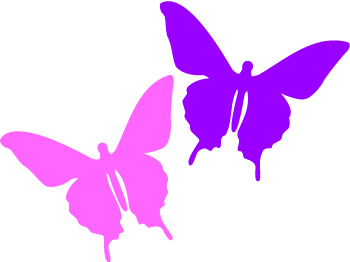Also known an the Anglewing Butterfly
Question Mark butterflies get their name from their wings. The forewings are hooked in a question mark shape.
Adult males will sit during the afternoon hours on tree trunks or leaves waiting for females. They will, however, leave their perches to chase other insects and even birds.
Females will lay eggs alone, or stacked, on the leaves of plants. These are not always the caterpillar's host plants. When the caterpillars appear, they must find a host plant to feed on.
Caterpillar host plants include American and Red Elms; Hackberry; Hops; and Nettles.
Upon maturity, adult Question Mark butterflies will feed on rotting fruit, tree sap, carrion, and animal waste. Only if these are unavailable do they feed on milkweed and asters.
Some adults will stay in the northern United States to hibernate, while others will migrate south.
*There are twenty known subspecies of the Anglewing (Comma / Question Mark) butterfly family.
* The two best ways to differentiate Question Mark butterflies from Comma butterflies are:
1) count the black lateral dots on the dorsal side of the wing. The Question Mark will have 4 dots, whereas the Comma will only have 3 dots.
2) look at the white "C" on the ventral side of the hind wings. If it has a white dot with it, it is a Question Mark. If it doesn't have a white dot, it is a Comma.
Otherwise, their appearances are virtually identical !!
Avg. Wingspan: 5.2 - 6.4 cm / 2 - 2.5 "
Diet: adults prefer rotting fruit, sap, dung and carrion. Only when these are not available do Question Marks go to flowers for nectar.
Kingdom: Animalia, Phylum: Arthropoda
Class: Insecta, Order: Lepidoptera
* Being Brush-footed butterflies, Question Marks have a short pair of fore legs that are used to taste food, and two pairs of longer rear legs that are used for propulsion.


The single biggest threat to butterfly survival is habitat destruction!!







